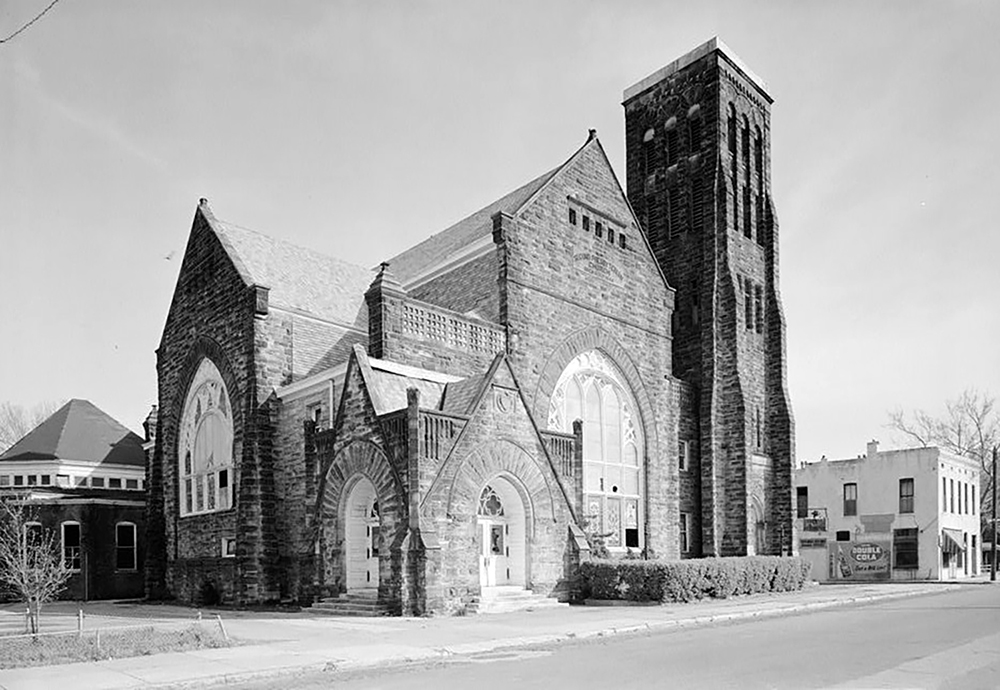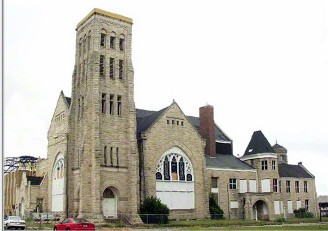As I do every morning, I checked my phone on Monday for early-morning messages and overnight news. To say I was shocked by one piece of news would be an understatement. The venerable Clayborn Temple, where we then-serving members of the Rotary Club of Memphis shifted our weekly meetings for the run-up year to the 2018 MLK commemoration, was gone, consumed by fire.
The sense of devastation and irredeemable loss was widely shared. One of those reacting was Anasa Troutman, the founder and executive director of Historic Clayborn Temple and founder and CEO of The Big We. Here is an excerpt from a statement she issued: “Early this morning, our beloved Historic Clayborn Temple — a sacred landmark in our city and our nation — suffered a devastating loss due to a fire. Our hearts are heavy with grief. For decades, Clayborn and the iconic I AM A MAN signs born in its basement have stood as an international beacon of resilience, faith, and the work to build beloved communities. It is a living testament of our past sacrifices and our future hope.
“Clayborn’s true spirit was never in the walls alone. It lives in us. Even as we mourn, we must remember: Resilience is our birthright, but so is the space to grieve. Our ancestors endured, grieved, rebuilt, and transcended unimaginable losses. We will do the same.”
Troutman’s statement is followed here by another, recovered from a time of hope, this one including excerpts from a press release written by me in 2017 for the Rotary Club’s imminent venture to inhabit the church, then undergoing restoration, for a season of remembrance and resolve. It explains much about both the club’s purpose and the importance, bordering on sacred, of the venue:
With the MLK commemoration then only months away, Arthur Oliver, Rotary’s then-president, explained: “Our move is meant to help bring attention to the historical importance that Clayborn Temple played in the Civil Rights Movement as our city approaches the 50th anniversary of the sanitation workers’ strike in April.”
That vintage press release continues: “At 124 years old [now 131 years old], Clayborn Temple is already listed as a local architectural treasure on the National Register of Historic Places. Earlier this year [again, in 2017], the temple received additional national recognition from the National Park Service for its historical importance as the central meeting place for the sanitation workers during their strike that took place in February through April of 1968.
“Located at the northeast corner of Hernando and Pontotoc, the temple sits just south of the FedExForum. Second Presbyterian Church constructed the building in 1893. ‘When it first opened, it was the largest church building in America south of the Ohio River,’ explained Rob Thompson, with Clayborn Reborn, a nonprofit group then working on Clayborn Temple’s restoration.
“As the Memphis city limits moved eastward in the 1930s and 1940s, so did the church’s congregation. When Second Presbyterian decided to move to its present location in east Memphis, it sold the building in 1949 to the African Methodist Episcopal (AME) Church. The new congregation then renamed the building after their bishop, Jim Clayborn.
“During the 1960s, Clayborn Temple continued as a house of worship for its congregation but it also began to serve as an important central meeting place for the Civil Rights Movement. But it was during the Memphis sanitation workers’ strike that Clayborn earned its recognition as a place of national significance for the part it played as the headquarters for the striking sanitation workers and their supporters and as a starting point for the strikers to assemble before their solidarity marches. Dr. Martin Luther King visited the temple on multiple occasions during the strike, and it was at Clayborn that the ‘I AM A MAN’ signs were indeed first distributed.”
This week’s catastrophe may have gutted the structure, but the spirit housed within survives and the work continues.

